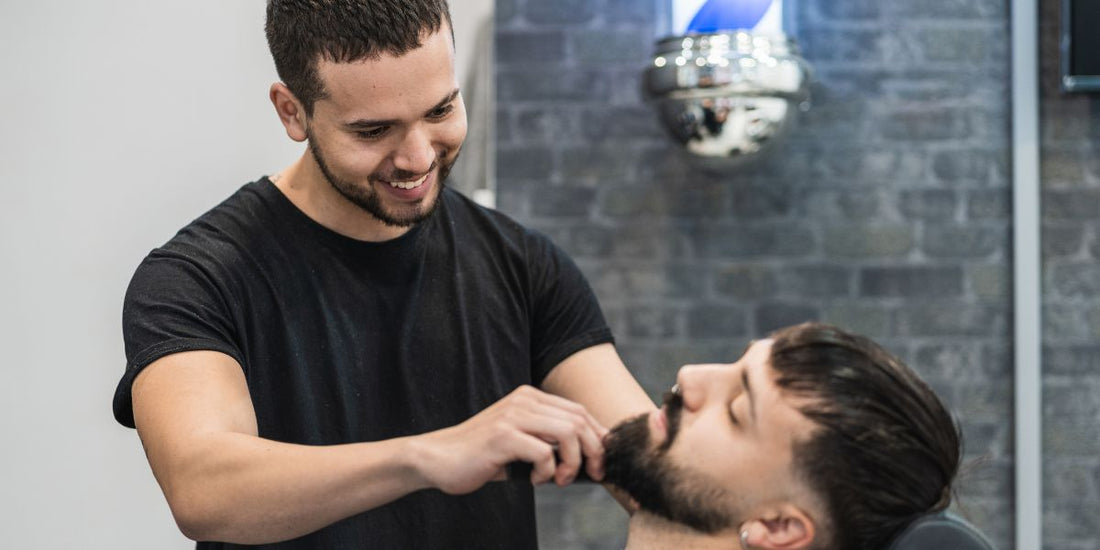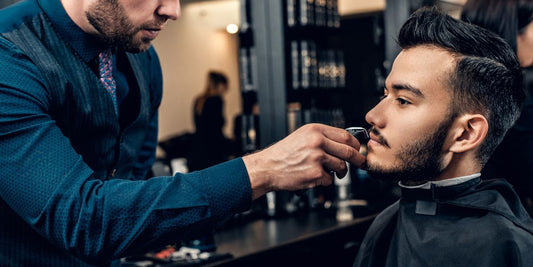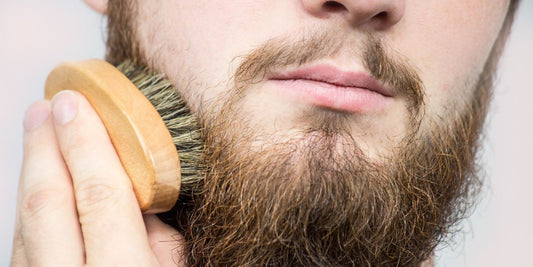A well-groomed beard can completely transform your look. One of the most stylish and modern ways to wear your beard is with a fade—also known as a beard fade. This is a technique where your beard gradually transitions from short to long, creating a well-groomed and natural look. In this article, you'll learn how to shave a fade, the tools you'll need, and how to create the perfect fade.
What is a Beard Overflow?
A beard fade, or blend, is a shaving technique where the beard length subtly transitions from the skin to a fuller beard. This is often achieved by trimming the beard shorter at the sideburns and jawline and gradually fading to a longer length at the chin or cheeks.
This creates a sleek, well-groomed look and helps your beard look more natural, without harsh lines or sharp contrasts.

Why Choose a Beard with Overflow?
A beard fade has several advantages:
✔️ Sleek, modern look – A well-executed transition gives your beard a neat and stylish look.
✔️ Suits any beard length – Whether you have a short or long beard, a blend ensures a neat finish.
✔️ Less maintenance than a clean cut – A fade grows out more naturally than a clean cut, meaning you’ll need to do touch-ups less often.
✔️ Suitable for all face shapes – By playing with the length and shape of the fade, you can accentuate or soften your facial shape.
What Tools Do You Need?
To shave a beard with a blend, you need the right tools:
🟦 Beard trimmer with adjustable length settings – Essential for creating the transition between different lengths.
🟦Razor or electric shaver – For a close finish to the skin.
🟦 Beard comb or brush – To position your beard hairs properly and trim them evenly.
🟦 Beard oil or beard balm – For hydration and styling after trimming.

How to Shave a Beard with a Blend?
Step 1: Choose the Right Lengths
Determine how strong the fade should be. A subtle fade has smaller length changes, while a sharp fade is more visible.
A commonly used guideline:
- Sideburns and upper part: 1-2 mm
- Jawline: 3-5 mm
- Lower beard (chin area): 8-12 mm
The greater the length difference, the more noticeable the fade.
Step 2: Start with the Longest Stand
Start with the longest trimmer setting and work from bottom to top. This prevents you from accidentally cutting off too much. First, trim your full beard to the desired length.
Step 3: Create the Transition
Use a shorter length for your sideburns and gradually trim them longer as you go down. You can do this by gradually lowering your trimmer setting as you work your way down.
Step 4: Blend the Transition
To achieve a natural transition, you can use a trimmer with a fade-in technique or adjust the lengths in small increments. Work in short strokes and don't trim too aggressively to avoid harsh lines.
Step 5: Define the Beard Line
Use a razor or precision trimmer to define sharp edges along your cheeks and neck. This creates a sharp contrast with the blend.
Step 6: Hydrate and Style
Rinse your face with cold water to soothe the skin and apply a moisturizing beard oil or balm . This prevents irritation and keeps your beard healthy and cared for.

Common Mistakes When Shaving Your Beard with a Blend
Switching to a shorter length too quickly
One of the biggest mistakes when shaving a beard with a fade is switching to a shorter length too quickly. This can result in harsh lines and an unnatural transition between lengths. Take your time and work in small increments. Start with a longer trimmer setting and gradually reduce the length as you work your way up. This creates a smooth and professional fade.
Not taking your facial shape into account
Not every beard style suits every face shape. A fade that's too high or too low can throw your face off balance and add unwanted accents. If you have a round face, a higher fade can make it appear longer. If you have a long face, a lower fade is better for creating balance. Experiment with different fade heights to see which one suits your face shape best.
Not blending properly
A smooth transition depends entirely on good blending. If the transition between the different lengths isn't done correctly, visible parting lines will appear. This can look messy and unnatural. Use a comb and trim in different directions to distribute the hair evenly. Work in small, flowing strokes and check regularly in the mirror that both sides are symmetrical.
Dry trimming without aftercare
Many men make the mistake of trimming their beards dry without using moisturizing products afterward. Dry trimming can lead to irritation, ingrown hairs, and a dull appearance. Always use a moisturizing beard oil or balm after trimming to soothe the skin and keep the hairs soft and hydrated. This prevents itching and ensures your beard looks healthy and well-groomed.
The Perfect Transition for a Well-Groomed Beard
A faded beard gives a modern and stylish look without requiring much maintenance. Using the right technique and tools, you can easily create a professional fade and keep your beard perfectly shaped.
Want to take your beard care to the next level? Check out our collection of beard oils and balms to keep your beard healthy.





